Cantore Arithmetic is able to introduce the longe line: Gold.
Now stars equated light and the vortex equated life comma and the line is driving lines to long lining. At 1 Corinthians 13:4 kjv and is kind: So now genesis one twenty four hyphen semi colon comma sequence out line Corinthians: (this is new).
Hello George Noory: Grid!
You searched for
"DRIVE" in the KJV Bible
57 Instances - Page 1 of 2 - Sort by Book Order - Feedback
- Jeremiah 46:15chapter context similar meaning copy save
- Why are thy valiant men swept away? they stood not, because the LORD did drivethem.
- Judges 2:21chapter context similar meaning copy save
- I also will not henceforth drive out any from before them of the nations which Joshua left when he died:
- Proverbs 22:15chapter context similar meaning copy save
- Foolishness is bound in the heart of a child; but the rod of correction shall drive it far from him.
- 2 Kings 4:24chapter context similar meaning copy save
- Then she saddled an ass, and said to her servant, Drive, and go forward; slack not thy riding for me, except I bid thee.
- Judges 1:28chapter context similar meaning copy save
- And it came to pass, when Israel was strong, that they put the Canaanites to tribute, and did not utterly drive them out.
- Job 18:11chapter context similar meaning copy save
- Terrors shall make him afraid on every side, and shall drive him to his feet.
- Joshua 17:12chapter context similar meaning copy save
- Yet the children of Manasseh could not drive out the inhabitants of those cities; but the Canaanites would dwell in that land.
- Acts 27:15chapter context similar meaning copy save
- And when the ship was caught, and could not bear up into the wind, we let her drive.
- Exodus 23:30chapter context similar meaning copy save
- By little and little I will drive them out from before thee, until thou be increased, and inherit the land.
- Judges 1:32chapter context similar meaning copy save
- But the Asherites dwelt among the Canaanites, the inhabitants of the land: for they did not drive them out.
- Ezekiel 4:13chapter context similar meaning copy save
- And the LORD said, Even thus shall the children of Israel eat their defiled bread among the Gentiles, whither I will drive them.
- Joshua 17:13chapter context similar meaning copy save
- Yet it came to pass, when the children of Israel were waxen strong, that they put the Canaanites to tribute; but did not utterly drive them out.
- Deuteronomy 4:38chapter context similar meaning copy save
- To drive out nations from before thee greater and mightier than thou art, to bring thee in, to give thee their land for an inheritance, as it is this day.
- Deuteronomy 11:23chapter context similar meaning copy save
- Then will the LORD drive out all these nations from before you, and ye shall possess greater nations and mightier than yourselves.
- Psalms 68:2chapter context similar meaning copy save
- As smoke is driven away, so drive them away: as wax melteth before the fire, so let the wicked perish at the presence of God.
- Job 24:3chapter context similar meaning copy save
- They drive away the ass of the fatherless, they take the widow's ox for a pledge.
- Zephaniah 2:4chapter context similar meaning copy save
- For Gaza shall be forsaken, and Ashkelon a desolation: they shall drive out Ashdod at the noon day, and Ekron shall be rooted up.
- Judges 1:30chapter context similar meaning copy save
- Neither did Zebulun drive out the inhabitants of Kitron, nor the inhabitants of Nahalol; but the Canaanites dwelt among them, and became tributaries.
- Judges 2:3chapter context similar meaning copy save
- Wherefore I also said, I will not drive them out from before you; but they shall be as thorns in your sides, and their gods shall be a snare unto you.
- Exodus 23:29chapter context similar meaning copy save
- I will not drive them out from before thee in one year; lest the land become desolate, and the beast of the field multiply against thee.
- 2 Chronicles 20:7chapter context similar meaning copy save
- Art not thou our God, who didst drive out the inhabitants of this land before thy people Israel, and gavest it to the seed of Abraham thy friend for ever?
- Judges 11:24chapter context similar meaning copy save
- Wilt not thou possess that which Chemosh thy god giveth thee to possess? So whomsoever the LORD our God shall drive out from before us, them will we possess.
- Jeremiah 27:10chapter context similar meaning copy save
- For they prophesy a lie unto you, to remove you far from your land; and that I should drive you out, and ye should perish.
- Deuteronomy 18:12chapter context similar meaning copy save
- For all that do these things are an abomination unto the LORD: and because of these abominations the LORD thy God doth drive them out from before thee.
- Judges 1:29chapter context similar meaning copy save
- Neither did Ephraim drive out the Canaanites that dwelt in Gezer; but the Canaanites dwelt in Gezer among them.
- Isaiah 22:19chapter context similar meaning copy save
- And I will drive thee from thy station, and from thy state shall he pull thee down.
- Judges 1:31chapter context similar meaning copy save
- Neither did Asher drive out the inhabitants of Accho, nor the inhabitants of Zidon, nor of Ahlab, nor of Achzib, nor of Helbah, nor of Aphik, nor of Rehob:
- Exodus 23:28chapter context similar meaning copy save
- And I will send hornets before thee, which shall drive out the Hivite, the Canaanite, and the Hittite, from before thee.
- Numbers 22:11chapter context similar meaning copy save
- Behold, there is a people come out of Egypt, which covereth the face of the earth: come now, curse me them; peradventure I shall be able to overcome them, and drive them out.
- Jeremiah 24:9chapter context similar meaning copy save
- And I will deliver them to be removed into all the kingdoms of the earth for their hurt, to be a reproach and a proverb, a taunt and a curse, in all places whither I shall drive them.
This is page: 1 of 2
1 2 Next >
Rein

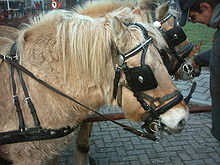


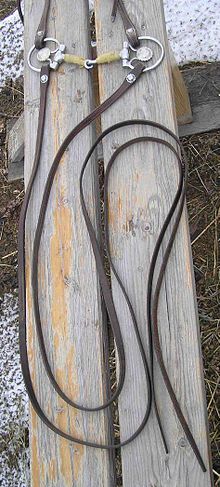
Reins are items of horse tack, used to direct a horse or other animal used for riding. They are long straps that can be made of leather, nylon, metal, or other materials, and attach to a bridle via either its bit or its noseband.
Use for riding[edit]
Reins are used to give subtle commands or cues, also known as rein aids. Various commands may signal a turn, ask for a slower speed, request a halt or rein back. Rein aids are used along with leg aids, shifting of body weight, and sometimes voice commands.
Harness reins[edit]
On some types of harnesses there might be supporting rings or "terrets" used to carry the reins over the animal's back. When pairs of equines are used in drawing a wagon or coach it is usual for the outer side of each pair to be connected to the reins and for the inside of the bits to be connected between the pair of horses by a short bridging strap or rope. The driver carries "four-in-hand" or "six-in-hand" being the number of reins connecting to the pairs.
Other uses[edit]
A single rein or rope may be attached to a halter to lead or guide a horse or packhorse. A long rein called a longeline may be used to allow the horse to move in a circle for training purposes, or for the purpose of a clinical lameness evaluation by a veterinarian. On certain designs of headgear, a third rein may be added to the paired reins, used for leading, longeing, or other specialized or stylistic purposes. The best-known example of a third rein used in the USA is the leading rein of the mecate of the classic bosal hackamore.
Types[edit]
Types of reins include:
- Closed reins, or loop reins: reins that are either a single piece or that buckle together at the ends. English riders usually use closed reins. Western riders in timed rodeo events use a single closed rein, as do those who use a romal. A closed rein helps prevent the rider from dropping the reins.
- Double reins: The combined use of two pairs of reins, a curb rein and a snaffle rein. This is usually two single (buckled or sewn) reins, though sometimes split reins may be seen on western-style bridles. Double reins are used with a double bridle, with bits such as the Pelham bit and, less often, on some gag bits used for polo.
- Draw reins and running reins: long reins, usually made of leather or nylon webbing, that attach to the saddle or the girth, run through the bit rings, and back to the rider. Several design variations, they add mechanical advantage to the rider's hands and may affect the horse's ability to raise or lower its head. Often used in conjunction with a snaffle rein by English riders, usually used alone by western riders.
- Lead rein: A third rein used on bridles, not to be confused with the single lead rope of a halter nor the direct rein aid known as the "leading rein". In North America a third rein is most commonly seen as part of the mecate of a hackamore. In Mongolia it is integral to the bridle, and tied to either a bit ring or a chin strap.
- Long reins, longlines, or driving lines: exceptionally long reins which allow the rider to control the horse from a cart, or from the ground, with the handler walking behind the horse.
- Mecate: a style of rein seen on a bosal style hackamore made of a single piece of rope that encompasses both a closed rein and a leading rope.
- Romal reins: a rein style from the vaquero tradition that incorporates a closed rein with a long quirt at the end.
- Side reins: used when longeing a horse, attached from the bit to the saddle or surcingle, they are not meant to be held by the rider.
- Split reins: a rein style seen in western riding where the reins are not attached to one another at the ends. They prevent a horse from tangling its feet in a looped rein, particularly when the rider is dismounted. They are considerably longer than closed reins.
- Two reins—reins used on bridles with two reins:
- Snaffle rein: Usually a laced rein that buckles at the center, used on the bradoon of a double bridle, or the upper ring of a pelham bit.
- Curb rein: The rein used at the end of the shank of a curb bit or pelham. Modern curb reins usually buckle together at the ends, though reins of the classical curb were sewn together at the ends to create a single rein.
In popular expression[edit]
In popular culture, to rein in means to hold back, slow down, control or limit. Sometimes the eggcorn, reign in, is used. Usage of the opposing free rein dates back to Geoffrey Chaucer (1343–1400)[1][2] and means to give or allow complete freedom, in action and decision, over something.
See also[edit]
Genesis 1:24
“And God said, Let the earth bring forth the living creature after his kind, cattle, and creeping thing, and beast of the earth after his kind: and it was so.”
King James Version (KJV)
1 Corinthians 13:4
“Charity suffereth long, and is kind; charity envieth not; charity vaunteth not itself, is not puffed up,”
King James Version (KJV)
You searched for
"LINE" in the KJV Bible
24 Instances - Page 1 of 1 - Sort by Book Order - Feedback
- Isaiah 28:13chapter context similar meaning copy save
- But the word of the LORD was unto them precept upon precept, precept upon precept; line upon line, line upon line; here a little, and there a little; that they might go, and fall backward, and be broken, and snared, and taken.
- Isaiah 28:10chapter context similar meaning copy save
- For precept must be upon precept, precept upon precept; line upon line, line upon line; here a little, and there a little:
- 2 Samuel 8:2chapter context similar meaning copy save
- And he smote Moab, and measured them with a line, casting them down to the ground; even with two lines measured he to put to death, and with one full line to keep alive. And so the Moabites became David's servants, and brought gifts.
- Zechariah 2:1chapter context similar meaning copy save
- I lifted up mine eyes again, and looked, and behold a man with a measuring line in his hand.
- 2 Corinthians 10:16chapter context similar meaning copy save
- To preach the gospel in the regions beyond you, and not to boast in another man's line of things made ready to our hand.
- 1 Kings 7:15chapter context similar meaning copy save
- For he cast two pillars of brass, of eighteen cubits high apiece: and a line of twelve cubits did compass either of them about.
- Jeremiah 31:39chapter context similar meaning copy save
- And the measuring line shall yet go forth over against it upon the hill Gareb, and shall compass about to Goath.
- Job 38:5chapter context similar meaning copy save
- Who hath laid the measures thereof, if thou knowest? or who hath stretched the lineupon it?
- Psalms 78:55chapter context similar meaning copy save
- He cast out the heathen also before them, and divided them an inheritance by line, and made the tribes of Israel to dwell in their tents.
- Psalms 19:4chapter context similar meaning copy save
- Their line is gone out through all the earth, and their words to the end of the world. In them hath he set a tabernacle for the sun,
- Ezekiel 47:3chapter context similar meaning copy save
- And when the man that had the line in his hand went forth eastward, he measured a thousand cubits, and he brought me through the waters; the waters were to the ankles.
- Joshua 2:21chapter context similar meaning copy save
- And she said, According unto your words, so be it. And she sent them away, and they departed: and she bound the scarlet line in the window.
- Zechariah 1:16chapter context similar meaning copy save
- Therefore thus saith the LORD; I am returned to Jerusalem with mercies: my house shall be built in it, saith the LORD of hosts, and a line shall be stretched forth upon Jerusalem.
- Ezekiel 40:3chapter context similar meaning copy save
- And he brought me thither, and, behold, there was a man, whose appearance was like the appearance of brass, with a line of flax in his hand, and a measuring reed; and he stood in the gate.
- Isaiah 28:17chapter context similar meaning copy save
- Judgment also will I lay to the line, and righteousness to the plummet: and the hail shall sweep away the refuge of lies, and the waters shall overflow the hiding place.
- Lamentations 2:8chapter context similar meaning copy save
- The LORD hath purposed to destroy the wall of the daughter of Zion: he hath stretched out a line, he hath not withdrawn his hand from destroying: therefore he made the rampart and the wall to lament; they languished together.
- 2 Chronicles 4:2chapter context similar meaning copy save
- Also he made a molten sea of ten cubits from brim to brim, round in compass, and five cubits the height thereof; and a line of thirty cubits did compass it round about.
- 2 Kings 21:13chapter context similar meaning copy save
- And I will stretch over Jerusalem the line of Samaria, and the plummet of the house of Ahab: and I will wipe Jerusalem as a man wipeth a dish, wiping it, and turning it upside down.
- Isaiah 34:11chapter context similar meaning copy save
- But the cormorant and the bittern shall possess it; the owl also and the raven shall dwell in it: and he shall stretch out upon it the line of confusion, and the stones of emptiness.
- Isaiah 34:17chapter context similar meaning copy save
- And he hath cast the lot for them, and his hand hath divided it unto them by line: they shall possess it for ever, from generation to generation shall they dwell therein.
- 1 Kings 7:23chapter context similar meaning copy save
- And he made a molten sea, ten cubits from the one brim to the other: it was round all about, and his height was five cubits: and a line of thirty cubits did compass it round about.
- Isaiah 44:13chapter context similar meaning copy save
- The carpenter stretcheth out his rule; he marketh it out with a line; he fitteth it with planes, and he marketh it out with the compass, and maketh it after the figure of a man, according to the beauty of a man; that it may remain in the house.
- Joshua 2:18chapter context similar meaning copy save
- Behold, when we come into the land, thou shalt bind this line of scarlet thread in the window which thou didst let us down by: and thou shalt bring thy father, and thy mother, and thy brethren, and all thy father's household, home unto thee.
- Amos 7:17chapter context similar meaning copy save
- Therefore thus saith the LORD; Thy wife shall be an harlot in the city, and thy sons and thy daughters shall fall by the sword, and thy land shall be divided by line; and thou shalt die in a polluted land: and Israel shall surely go into captivity forth of his land.
Baby transport

Various methods of transporting children have been used in different cultures and times. These methods include baby carriages (prams in British English), infant car seats, portable bassinets (carrycots), strollers (pushchairs), slings, backpacks, baskets and bicycle carriers.
The large, heavy prams (short for perambulator), which had become popular during the Victorian era, were replaced by lighter designs during the latter half of the 1900s.
Baskets, slings and backpacks[edit]

Infant carrying likely emerged early in human evolution as the emergence of bipedalism would have necessitated some means of carrying babies who could no longer cling to their mothers and/or simply sit on top of their mother's back.[1] On-the-body carriers are designed in various forms such as baby sling, backpack carriers, and soft front or hip carriers, with varying materials and degrees of rigidity, decoration, support and confinement of the child. Slings, soft front carriers, and "baby carriages" are typically used for infants who lack the ability to sit or to hold their head up. Frame backpack carriers (a modification of the frame backpack), hip carriers, slings, mei tais and a variety of other soft carriers are used for older children.


Images of children being carried in slings can be seen in Egyptian artwork dating back to the time of the Pharaohs,[2] and have been used in many indigenous cultures. One of the earliest European artworks showing baby wearing is a fresco by Giottopainted in around 1306 AD, which depicts Mary carrying Jesus in a sling.[3] Baby wearing in a sling was well known in Europe in medieval times, but was mainly seen as a practice of marginalised groups such as beggars and Romani people.[4] A cradleboard is a Native American baby carrier used to keep babies secure and comfortable and at the same time allowing the mothers freedom to work and travel.[5] The cradleboards were attached to the mother's back straps from the shoulder or the head. For travel, cradleboards could be hung on a saddle or travois. Ethnographic tradition indicates that it was common practice to cradleboard newborn children until they were able to walk,[6] although many mothers continued to swaddle their children well past the first birthday. Bound and wrapped on a cradleboard, a baby can feel safe and secure. Soft materials such as lichens, moss and shredded bark were used for cushioning and diapers. Cradleboards were either cut from flat pieces of wood or woven from flexible twigs like willow and hazel, and cushioned with soft, absorbent materials. The design of most cradleboards is a flat surface with the child wrapped tightly to it. It is usually only able to move its head.
On-the-body baby carrying started being known in western countries in the 1960s, with the advent of the structured soft pack in the mid-1960s. Around the same time, the frame backpack quickly became a popular way to carry older babies and toddlers. In the early 1970s, the wrap was reintroduced in Germany. The two ringed sling was invented by Rayner and Fonda Garner in 1981 and popularized by Dr William Sears starting in around 1985.[7] In the early 1990s, the modern pouch carrier was created in Hawaii. While the Chinese mei tai has been around in one form or another for centuries, it did not become popular in the west until it was modernized with padding and other adjustments. It first became popular and well known in mid-2003.
Portable cradles, including cradleboards, baskets, and bassinets, have been used by many cultures to carry young infants.
Wheeled transport methods[edit]
This section needs additional citations for verification. (September 2023) |
Wheeled devices are generally divided into prams, used for newborn babies in which the infant normally lies down facing the pusher, and the strollers, which are used for the small child up to about three years old in a sitting position facing forward.
History[edit]
William Kent developed an early stroller in 1733.[8] In 1733, the Duke of Devonshire asked Kent to build a means of transport that would carry his children. Kent obliged by constructing a shell shaped basket on wheels that the children could sit in. This was richly decorated and meant to be pulled by a goat or small pony. Benjamin Potter Crandall sold baby carriages in the US in the 1830s which have been described as the "first baby carriages manufactured in the US"[9] Another early development was F.A. Whitney Carriage Company. His son, Jesse Armour Crandall was issued a number of patents for improvements and additions to the standard models. These included adding a brake to carriages, a model which folded, designs for parasols and an umbrella hanger. By 1840, the baby carriage became extremely popular. Queen Victoria bought three carriages from Hitchings Baby Store.
The carriages of those days were built of wood or wicker and held together by expensive brass joints. These sometimes became heavily ornamented works of art. Models were also named after royalty: Princess and Duchess being popular names, as well as Balmoral and Windsor.
In June 1889, an African American man named William H. Richardson patented his idea of the first reversible stroller. The bassinet was designed so it could face out or in towards the parent. He also made structural changes to the carriage. Until then the axle did not allow each wheel to move separately. Richardson's design allowed this, which increased maneuverability of the carriages. As the 1920s began, prams were now available to all families and were becoming safer, with larger wheels, brakes, deeper prams, and lower, sturdier frames.
In 1965, Owen Maclaren, an aeronautical engineer, worked on complaints his daughter made about travelling from England to America with her heavy pram. Using his knowledge of aeroplanes, Maclaren designed a stroller with an aluminium frame and created the first true umbrella stroller. He then went on to found Maclaren, which manufactured and sold his new design. The design took off and soon "strollers" were easier to transport and used everywhere.
In the 1970s, however, the trend was more towards a more basic version, not fully sprung, and with a detachable body known as a "carrycot".[notes 1] Now, prams are very rarely used, being large and expensive when compared with "buggies" (see below). One of the longer lived and better known brands in the UK is Silver Cross, first manufactured in Hunslet, Leeds, in 1877, and later Guiseley from 1936 until 2002 when the factory closed. Silver Cross was then bought by the toy company David Halsall and Sons who relocated the head office to Skipton and expanded into a range of new, modern baby products including pushchairs and "travel systems". They continue to sell the traditional Silver Cross coach prams which are manufactured at a factory in Bingley in Yorkshire.
Since the 1980s, the stroller industry has developed with new features, safer construction and more accessories.
Prams[edit]

Larger and heavier prams, or perambulators, had been used since their introduction in the Victorian era; prams were also used for infants, often sitting up. The term carrycot became more common in the UK after the introduction of lighter units with detachable baby carriers in the 1970s.
As they developed through the years suspension was added, making the ride smoother for both the baby and the person pushing it.
The word pram is etymologically a shortening of its now less common synonym perambulator.[10][11]
Strollers[edit]

'Strollers' or 'pushchairs/buggies' (British English), are used for small children up to about three years old in a sitting position facing forward.
"Pushchair" was the popularly used term in the UK between its invention and the early 1980s[citation needed], when a more compact design known as a "buggy" became the trend, popularised by the conveniently collapsible aluminium-framed Maclaren buggy designed and patented by the British aeronautical designer Owen Maclaren in 1965. "Buggy" is the usual term in the UK (sometimes "pushchair"); in American English, buggy usually refers to a four-wheeled vehicle known as a quad or quad bike in the UK. "Stroller" is the usual term in the USA. Newer versions can be configured to carry a baby lying down like a low pram and then be reconfigured to carry the child in the forward-facing position.
A variety of twin pushchairs are manufactured, some designed for babies of a similar age (such as twins) and some for those with a small age gap. Triple pushchairs are a fairly recent addition, due to the number of multiple births being on the increase. Safety guidelines for standard pushchairs apply. Most triple buggies have a weight limit of 50 kg and recommended use for children up to the age of 4 years.
A travel system is typically a set consisting of a chassis with a detachable baby seat and/or carrycot. Thus a travel system can be switched between a pushchair and a pram. Another benefit of a travel system is that the detached chassis (generally an umbrella closing chassis) when folded will usually be smaller than other types, to transport it in a car trunk or boot. Also, the baby seat will snap into a base meant to stay in an automobile, becoming a car seat. This allows undisturbed movement of the baby into or out of a car and a reduced chance of waking a sleeping baby.
Another modern design showcases a stroller that includes the possibility for the lower body to be elongated, thereby transforming the stroller into a kick scooter. Steering occurs by leaning towards either side. Depending on the model, it can be equipped with a foot- and/or handbrake. Speeds up to 15 km/h (10 mph) can be reached. The first stroller of this kind was the so-called "Roller Buggy", developed by industrial designer Valentin Vodev in 2005. In 2012 the manufacturer Quinny became interested in the concept and teamed up with a Belgian studio to design another model.
The modern infant car seat is a relative latecomer. It is used to carry a child within a car. Such car seats are required by law in many countries to safely transport young children.
In contemporary culture with four-figure systems or sleek jogging strollers common in some circles, strollers often serve as not only an infant transport device but also a highly visible symbol of everything from class to parenting philosophy.[12]
Others[edit]
Bicycles can be fitted with a bicycle trailer or a children's bicycle seat to carry small children. An older child can ride on a one-wheel trailer bike with an integrated seat and handle bars.
A "travel system" includes a car seat base, an infant car seat, and a baby stroller. The car seat base is installed in a car. The infant car seat snaps into the car seat base when traveling with a baby. From the car, the infant car seat can be hand carried and snapped onto the stroller.




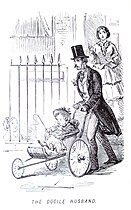

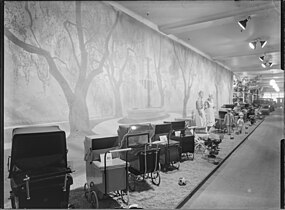
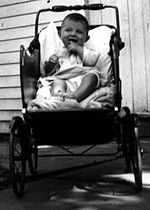


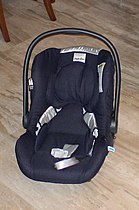




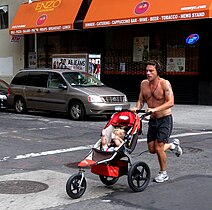

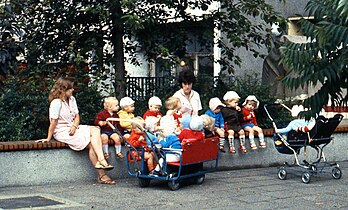

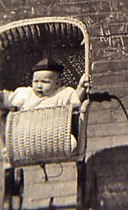










No comments:
Post a Comment